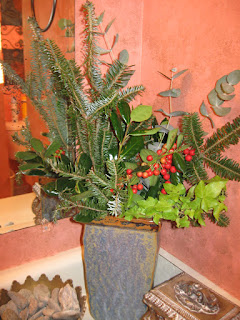Wildlife is generally welcome in my backyard; my gardens have even been registered with the National Wildlife Federation as a "Certified Wildlife Habitat." When I'm harvesting edibles, my wildlife partners and I sometimes have "discussions" about what is mine and what is theirs, but we usually get along pretty well.

This year, however, has been a different story. It started with the small water garden. Some creature was climbing in and completely digging up my water lily, even gnawing on the roots. At first I suspected a cat might be trying to catch the fish but soon realized it had to be something much stronger and more determined than a cat. It took repeated failed efforts but finally I used yards of fishing line to tie a metal rack held down by some heavy yard art to save my water lily from total destruction. I technically won the battle but my water garden looked a little strange all summer.
At the same time, I was repeatedly planting my corn patch, only to find that something was methodically following behind me, eating all the corn kernels. Was it the same animal that was ravaging the water lily? I never found foot prints but I was highly suspicious.
The next line of battle was my hanging finch feeder. I successfully kept squirrels out that feeder by hanging it with fishing line that is too fine for a squirrel to climb down on. My new wildlife nemesis was chewing the line, dropping the feeder to the ground and then popping the lid off to get to the sunflower seed. After three nasty falls, the bird feeder exploded. The mystery creature won the battle.
The last straw for me came with its invasion into my pole bird feeder. It was climbing up the pole, around the 15" squirrel baffle, removing the wire latch holding the cover in place, throwing the cover off the top of the feeder, and devouring all of the bird seed.
I never saw this animal but it's talented determination to get to anything edible lead me to the conclusion that this must be a raccoon. Research revealed that raccoons in a suburban environment are bad news for everyone concerned. They often carry disease and are extremely dangerous when cornered; they have been known to kill dogs three times their size. They are opportunistic feeders with destructive tendencies (no surprise to me). There are only two ways to solve the problem, one is to capture and release in a rural setting. The recommended method for suburban raccoons is to trap and destroy.
You won't want to read the details, so I'll just say that I lost some battles this summer, but I've won the war.

 Christmas is over, the decorations are packed away and the gloomy weather in central Alabama seems to produce nothing but gray skies and dark days.
Christmas is over, the decorations are packed away and the gloomy weather in central Alabama seems to produce nothing but gray skies and dark days. 















































